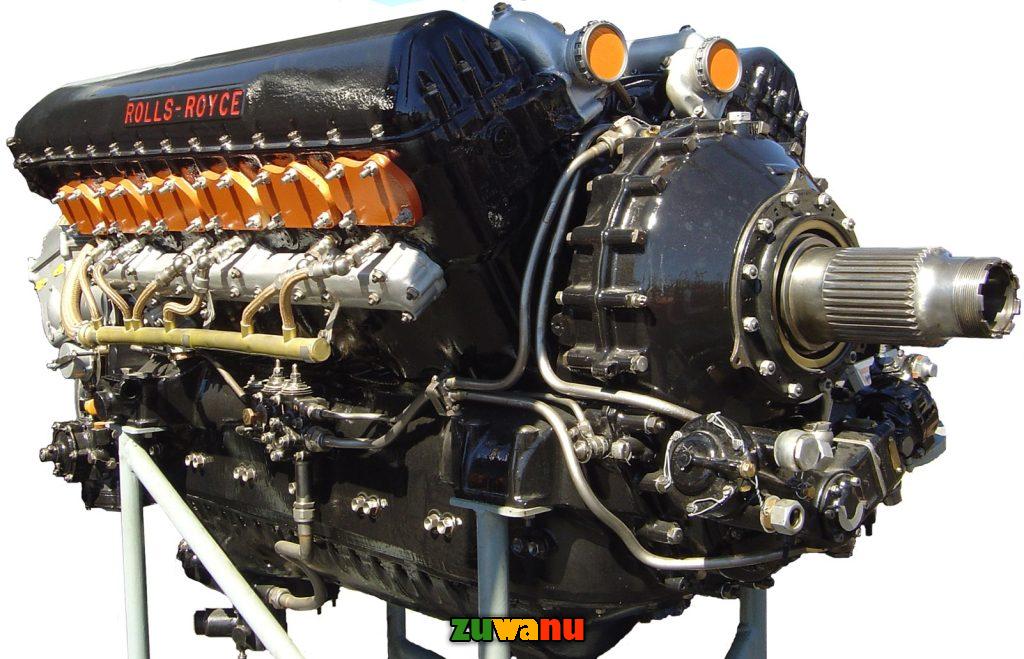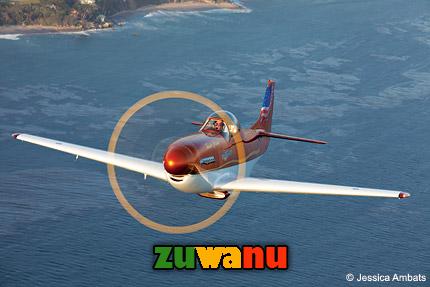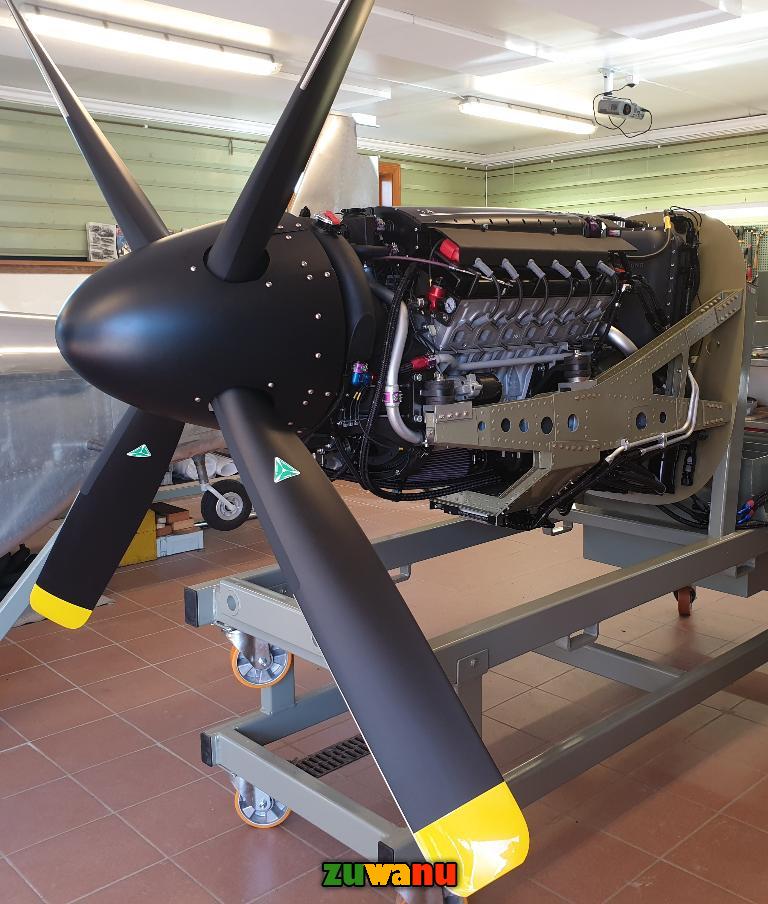V12 Engines in Aircrafts: A Comprehensive Guide
Table of Contents
Introduction (V12 Engines in Aircrafts)

Aircraft engines have always been the heartbeat of aviation technology, propelling mankind’s desire to conquer the skies. Over the years, a wide array of engine configurations have been developed, each with its own unique set of characteristics and capabilities. Among these, the V12 engine stands out as a prime example of engineering excellence. This article delves into the world of V12 aircraft engines, covering everything from their design, power output, durability, fuel efficiency, and more.
Chapter 1: The Evolution of V12 Engines in Aircraft
Before we delve into the specifics of V12 aircraft engines, it is important to understand their historical evolution. The V12 configuration, known for its incredible power and efficiency, was not originally designed for aviation. Instead, it first gained prominence in the automotive world.
1.1 The Origin of the V12 Engine

The V12 engine concept dates back to the early 20th century. Packard Motor Car Company was one of the first automobile manufacturers to develop and popularize V12 engines in their cars. These power-plants featured twelve cylinders arranged in a V-shaped configuration, hence the name V12. The design provided a smooth and balanced power delivery, making it highly desirable for luxury automobiles.
1.2 Transition to Aircraft
As aircraft design and technology advanced, the need for more powerful engines became evident. The V12 engine’s inherent advantages, such as its balance and power output, made it an appealing choice for aircraft propulsion. In the early 1930s, aircraft manufacturers began adapting and designing V12 engines for their needs. This shift marked the beginning of an era of high-performance aviation.
Chapter 2: The Anatomy of V12 Aircraft Engines
To comprehend the power and precision of V12 aircraft engines, one must first understand their intricate internal workings.
2.1 Cylinders and Configuration (V12 Engines in Aircrafts)
A V12 aircraft engine consists of twelve cylinders, typically arranged in a “V” shape. This configuration allows for optimal balance and smooth operation. Each cylinder contains a piston, which moves up and down within the cylinder bore. The precise dimensions of these components, including bore diameter and stroke length, can vary among different V12 engines, depending on their design and purpose.
2.2 Combustion Process
V12 aircraft engines operate on the four-stroke cycle: intake, compression, power, and exhaust. During the intake stroke, air is drawn into the cylinders. The compression stroke compresses the air, raising its temperature and pressure. In the power stroke, fuel is injected into the compressed air, ignited by spark plugs, and the resulting explosion forces the piston down. Finally, the exhaust stroke expels the burned gases.

2.3 Forced Induction
Many V12 aircraft engines are equipped with forced induction systems to increase power output. Superchargers or turbochargers are commonly used to compress the incoming air, allowing more fuel to be burned and producing higher horsepower.
Chapter 3: Depower: The Control of Engine Output
Depowering an aircraft engine is an essential feature, allowing pilots to control the engine’s output, especially during different phases of flight. This process varies depending on the specific engine and aircraft type.
3.1 Variable Pitch Propellers
In many aircraft equipped with V12 engines, depower is achieved by controlling the pitch of the propeller blades. By adjusting the angle of the blades, the engine’s output can be increased or decreased. This fine-tuning is crucial for optimizing performance during takeoff, cruising, and landing.
3.2 Throttle Control
V12 aircraft engines also feature throttle controls, similar to those found in cars. Pilots can manipulate the throttle to regulate the flow of fuel and air into the engine. Reducing throttle input decreases power output, while increasing it provides more power.
3.3 Fuel Management Systems
Modern V12 aircraft engines are often equipped with advanced fuel management systems that allow for precise control of fuel injection and ignition timing. These systems are vital for maintaining engine efficiency and reducing fuel consumption.
Power and Efficiency of V6 Engines: Complete Guide
Chapter 4: Power and Performance: Horsepower Output
One of the most compelling aspects of V12 aircraft engines is their impressive power output. These engines are capable of delivering substantial horsepower, which is crucial for aircraft to achieve the necessary speed and altitude.
4.1 Horsepower Ratings
V12 aircraft engines are available in a wide range of horsepower ratings, depending on their application. Some engines are designed for smaller, lighter aircraft, while others are intended for larger, heavier planes. The power output of V12 engines can range from a few hundred horsepower to several thousand horsepower, with some high-performance models even exceeding 3,000 horsepower.
4.2 High Power-to-Weight Ratio
The power-to-weight ratio of V12 aircraft engines is a key factor in their performance. These engines are known for their ability to deliver a significant amount of power relative to their weight. This is essential for achieving the necessary thrust-to-weight ratio for takeoff and climb, allowing aircraft to ascend to cruising altitude quickly.
Chapter 5: Durability and Reliability
Durability and reliability are of utmost importance in aviation, and V12 aircraft engines are designed with these factors in mind. Their robust construction and careful engineering ensure they can withstand the rigors of flight.
5.1 Materials and Construction (V12 Engines in Aircrafts)
V12 aircraft engines are constructed using high-strength materials to endure the stresses of combustion and high-speed operation. These engines often feature precision-machined components and robust castings to maintain structural integrity.
5.2 Rigorous Testing
Before they are certified for use in aircraft, V12 engines undergo extensive testing and quality control measures. This includes testing for extreme temperatures, pressure differentials, and various flight conditions. Engines must meet strict reliability and safety standards to receive certification from aviation authorities.
Chapter 6: Fuel Efficiency: Balancing Power and Consumption
Fuel efficiency is a critical concern in aviation, both for economic and environmental reasons. V12 aircraft engines must strike a balance between delivering ample power and minimizing fuel consumption.
6.1 Lean of Peak (LOP) Operation
Many V12 engines are designed to operate efficiently in a lean-of-peak condition. This means that the air-fuel mixture is slightly lean, reducing fuel consumption while maintaining acceptable power levels. LOP operation is often used during cruise, where maximum power is not required.
6.2 Advanced Combustion Technology
Advancements in combustion technology have led to more efficient fuel burning in V12 aircraft engines. The development of high-efficiency combustion chambers and improved fuel injection systems has contributed to better fuel economy.
Chapter 7: Best V12 Engine Manufacturers for Aircraft
Several manufacturers have gained prominence in the production of V12 aircraft engines. The following are some of the notable manufacturers known for their quality and innovation in this field.
7.1 Rolls-Royce
Rolls-Royce is a renowned name in the world of aviation, with a long history of producing high-performance V12 aircraft engines. Their engines are widely used in various military and civilian aircraft, known for their reliability and power output.
7.2 Pratt & Whitney
Pratt & Whitney is another prominent manufacturer of V12 aircraft engines. Their engines have been pivotal in military aviation and are known for their durability and cutting-edge technology.
7.3 Packard
Packard, the automotive company that originally popularized the V12 engine configuration, also ventured into aircraft engine production. Their V12 engines have been used in various aircraft, particularly during the early 20th century.
7.4 Allison Engine Company
Allison Engine Company, now part of Rolls-Royce, was a key player in the development of V12 aircraft engines. They produced engines for a wide range of military aircraft, demonstrating a commitment to power and reliability.
Chapter 8: V12 Engines in Aircraft vs. V12 Engines in Cars
While both V12 engines in aircraft and V12 engines in cars share a common configuration, they differ significantly in design, purpose, and operation. Here’s a comparison of the two:
8.1 Purpose and Design
V12 aircraft engines are specifically engineered for the unique demands of aviation. They must deliver consistent power at high altitudes, withstand extreme temperature fluctuations, and meet strict safety and reliability standards. In contrast, V12 engines in cars are designed for ground transportation, emphasizing factors like smoothness, quietness, and ease of use.
8.2 Power Output
V12 aircraft engines are optimized for maximum power output, making them capable of producing several thousand horsepower. In contrast, V12 engines in cars, while still powerful, typically have lower output to maintain fuel efficiency and meet emissions regulations.
8.3 Cooling Systems
V12 aircraft engines require sophisticated cooling systems to maintain optimal operating temperatures during high-stress flight conditions. This is a significant departure from V12 car engines, which are primarily air-cooled or water-cooled for normal driving conditions.
8.4 Fuel Injection and Ignition
V12 aircraft engines often incorporate advanced fuel injection and ignition systems to operate efficiently at various altitudes and conditions. V12 car engines may prioritize smooth, consistent power delivery, especially at low RPMs.
8.5 Regulatory Compliance
V12 aircraft engines must adhere to stringent aviation regulations and standards, ensuring safety and reliability. V12 car engines are designed to meet automotive regulations, which focus on emissions, noise, and fuel economy.
Chapter 9: V12 Aircraft Engine Specifications
To better appreciate the capabilities of V12 aircraft engines, let’s explore some of their specifications and features.
9.1 Displacement
The displacement of a V12 engine refers to the total volume of air and fuel that can be drawn into its cylinders during one complete engine cycle. V12 aircraft engines can have a wide range of displacements, from a few liters to over 30 liters or more.
9.2 Compression Ratio
The compression ratio is the ratio of the cylinder’s volume when the piston is at the bottom of the stroke (bottom dead center) to the volume when the piston is at the top of the stroke (top dead center). V12 aircraft engines generally have high compression ratios, which contribute to their power output and efficiency.
9.3 Weight
The weight of a V12 aircraft engine varies depending on its design, materials, and intended application. High-performance V12 engines are often lighter due to advanced materials and construction techniques.
9.4 Cooling System
V12 aircraft engines typically employ liquid cooling systems to maintain optimal operating temperatures. This involves the circulation of coolant through the engine to dissipate heat, ensuring reliable and efficient operation.
Chapter 10: Speed and Performance
The speed and performance of V12 aircraft engines are critical factors in their effectiveness. These engines are designed to deliver exceptional performance in various flight conditions.
10.1 High RPM Capability
V12 aircraft engines are capable of running at high RPM (Revolutions Per Minute). This allows them to generate the necessary thrust and power for takeoff, climbing, and rapid acceleration.
10.2 Altitude Performance
V12 engines are designed to perform efficiently at high altitudes, where the air is thinner and combustion conditions are more challenging. Their ability to maintain power at altitude is crucial for commercial and military aircraft.
10.3 Acceleration
V12 aircraft engines provide rapid acceleration, which is important for military applications, such as fighter jets. This enables aircraft to respond quickly to changing tactical situations.
Chapter 11: The Price of Power
The cost of V12 aircraft engines can vary significantly based on their size, complexity, and intended use. While specific pricing details are often closely guarded by manufacturers and subject to negotiation, we can provide a general overview of the factors that influence the price of these engines.
11.1 Engine Size and Power
The size and power output of a V12 aircraft engine are major determinants of its cost. Larger engines with higher horsepower ratings are generally more expensive due to the greater materials and manufacturing complexity required.
11.2 Technology and Features
Engines with advanced technology, such as digital engine control systems, fuel-efficient designs, and state-of-the-art materials, tend to be more costly. These features contribute to better performance, efficiency, and durability.
11.3 Certification and Regulatory Compliance
The certification process for aircraft engines is a rigorous and costly endeavor, which can affect the overall price of V12 engines. Manufacturers must invest in extensive testing and compliance with aviation regulations.
Conclusion (V12 Engines in Aircraft’s)
V12 aircraft engines represent a pinnacle of engineering achievement, embodying the power, precision, and durability necessary to propel aircraft to new heights. Their rich history and ongoing evolution in the aviation industry continue to shape the course of flight. Whether in military fighter jets or civilian airliners, V12 engines have proven their worth as a formidable force in the world of aviation.
From the transition of V12 engines from automobiles to aircraft, their anatomy and operation, power output and fuel efficiency, to the best manufacturers and a comparison with their automotive counterparts, this article has covered all the crucial aspects of V12 aircraft engines. As aviation technology continues to advance, we can expect even more remarkable innovations in the world of V12 engines, ensuring that the skies remain open for exploration and adventure.
